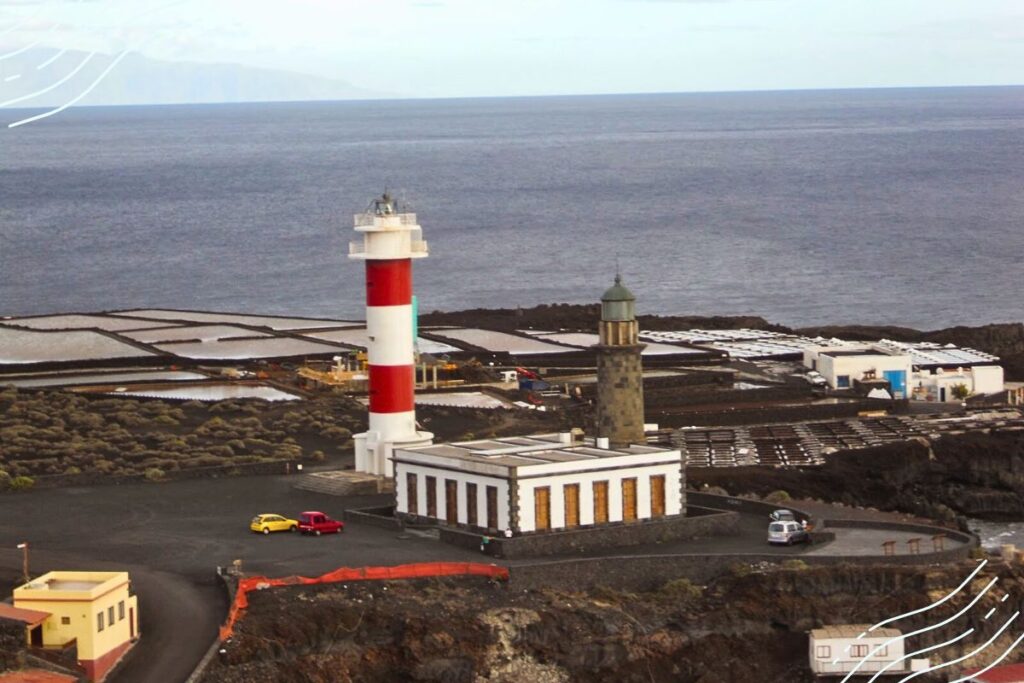Welcome to a mesmerizing journey through the captivating world of «Lighthouses on La Palma»! In this article, we will embark on an exploration of the four strategically positioned lighthouses scattered across the scenic island of La Palma. Managed by the Port Authority – Ports of Tenerife, these lighthouses play a crucial role in guiding ships and ensuring maritime safety. So, if you’re curious to learn about these mesmerizing beacons of light, join us as we delve into their fascinating history and unique technical features.

The Essence of «Lighthouses on La Palma«
Each lighthouse stands tall with distinct components meticulously maintained by skilled technicians. These components include a lantern, light sensors (to activate and deactivate the system), batteries (as a backup power supply), charger, and, in some cases, a generator. Regular inspections guarantee that these elements function optimally, providing uninterrupted illumination.
Unique Technical Features
Every lighthouse boasts its own distinctive technical characteristics, particularly in terms of their flashing patterns, making them easily distinguishable from neighboring beacons. Throughout our expedition, we meticulously recorded their geodesic positions using a GPS Garmin Dakota 20, calibrated precisely at each lighthouse location. For technical insights, we referred to the official website of the Port Authority of Santa Cruz de Tenerife.
Lighthouses on La Palma

Faro de Fuencaliente: A Beacon with a Tale
Our journey commences at Faro de Fuencaliente, nestled near Playa Nueva or Playa de Echentive, close to the Salinas de Fuencaliente, approximately 50 km from the island’s capital. Originally constructed in 1897, this historical lighthouse faced damages during the eruption of the Teneguía Volcano in 1971. As a result, a new lighthouse was erected nearby, and in 2006, the old one was reimagined to house the Interpretation Center of the Marine Reserve of La Palma. The modern luminary now showcases an impressive range of 14 nautical miles (approximately 28 km), with its focal plane situated 36 meters above sea level. A cylindrical tower adorned with red and white horizontal bands stands at an impressive height of 24 meters. Powered by solar energy, it operates without reliance on the electrical grid or its own generator.

Faro de Punta Lava: A Vision in White
Continuing our quest, we arrive at Faro de Punta Lava, nestled near Puerto Naos, in the enchanting region known as La Bombilla, Tazacorte municipality. This modern lighthouse boasts an elegant white octagonal tower, offering an impressive range of 20 nautical miles (about 37 km) while soaring 51 meters above sea level. The tower itself measures 48 meters in height. With a rotating optic system, this lighthouse connects to the electrical grid to charge its batteries, eliminating the need for a generator.

Faro Arenas Blancas: A Seaside Serenade
In the Villa de Mazo municipality, we encounter Faro Arenas Blancas, perched gracefully at Playa La Salemera. Its striking white cylindrical tower houses a fixed optic system, meaning it does not rotate. Erected in 1992, this lighthouse extends its guiding light up to 20 nautical miles (approximately 37 km), with its tower rising 37.5 meters high and the focal point positioned 45.5 meters above sea level. Equipped with electrical facilities, a generator, batteries, and charger, Faro Arenas Blancas ensures continuous illumination.

Faro Punta Cumplida: A Beacon of Maritime History
Our journey culminates at Faro Punta Cumplida in the Barlovento municipality, surrounded by lush banana plantations. Operating since 1867, this lighthouse stands tall with a masonry troncoconical tower, soaring 34 meters high. It boasts an impressive range of 23 nautical miles (approximately 43 km) and positions its focal plane at an impressive height of 63 meters above sea level. One of the oldest lighthouses in the Canary Islands, Faro Punta Cumplida utilizes a rotating optic system, supported by the electrical grid, which powers its battery charger, while a Ruston unit serves as the generator. Although the site is not open to visitors, it remains a fascinating piece of European maritime history, being the first lighthouse on the continent to adopt high-power LED lamps.

Photographs by Gerardo Oronoz.
Tips for Your Lighthouse Expedition
To make the most of your adventure, consider these handy tips:
- Check the specific visiting hours and access rules for each lighthouse to plan your trip accordingly.
- Capture the breathtaking views with your camera, as each lighthouse offers picturesque vistas.
- Experience the enchantment during sunrise or sunset for a truly magical ambiance.
- Respect the surroundings and preserve the natural beauty of the island during your exploration.
Whether you’re a history enthusiast, a photography aficionado, or a nature seeker, the «Lighthouses on La Palma» promise an enchanting experience that will stay etched in your memory. Embark on this unforgettable journey and witness the guiding lights that have captivated visitors to the island for generations.
